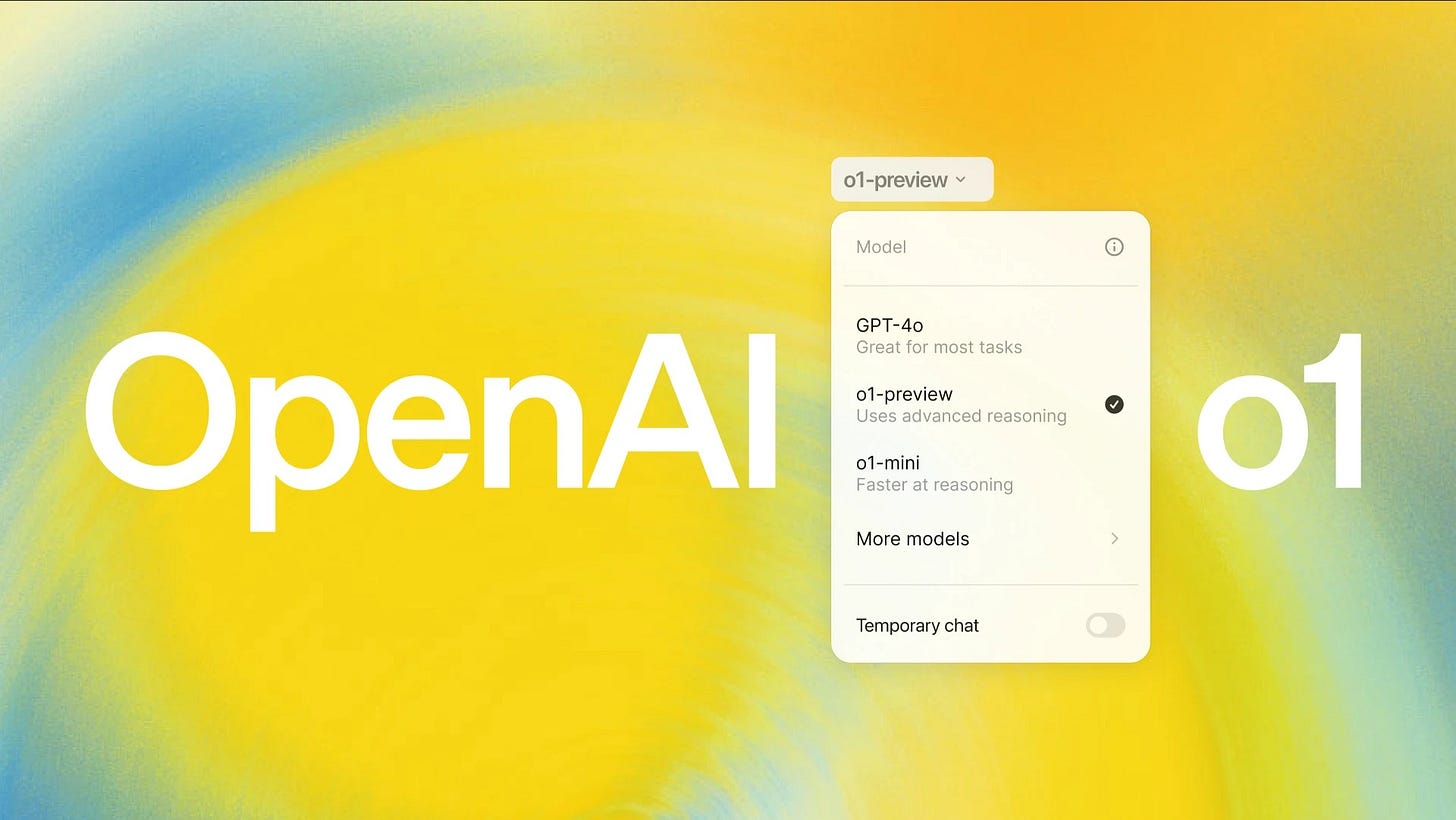Introducing Open AI o1-preview
A new series on reasoning models solving hard problems. Available starting 9.12
Open AI has just taken a giant leap in the world of AI with a new line of reasoning models-Open AI o1-preview. The newer model will be available from September 12th, more fitted to deal with monumental tasks in science, coding, and even mathematics. Let’s take a closer look at what is different, what works, and why these models will be such a game-changer for researchers, developers, and others.
What Makes OpenAI o1-Preview Special?
The o1-preview series has been engineered to think longer and more deeply before responding. That makes it fundamentally different from any previous models. This, in fact, makes it all the more capable of reasoning through complicated tasks. The first model in this series is available in ChatGPT and the OpenAI API. While this is a preview and OpenAI plans to update and develop on a regular schedule, what’s here now is critically capable already.
In contrast with previous models like GPT-4, o1-preview thinks differently. The model captures a very human-like trend-to take time and refine its thought process, try out different strategies, and recognize where it went wrong. This is somewhat similar to having an AI system which thinks but also further learns to think.
How Does It Work? 🧠🔎
The o1-preview models are trained on the reasoning process of humans. During training, they tend to spend more time going over the problems, trying various methods to solve them, and then eliminating mistakes made. In this regard, they learn from experience — things that allow them to improve their ability to solve problems bit by bit with time.
In recent tests, the next version of this model did as well as PhD students in domains such as physics, chemistry, and biology. The model does very well in coding and math too: scoring 83% on the IMO qualifying exam, while GPT-4 achieved 13%; it even got an 89th percentile in Codeforces coding competitions! It really shows this leap in performance, with o1-preview prepared for some of the toughest challenges at hand with computational tasks.
Safety: A New Approach to AI Alignment 🛡️
Safety training with o1-preview also constitutes a new approach in which OpenAI leverages the capabilities of the model to better enforce safety and alignment guidelines. Or, in other light, the model was now able to reason about safety rules and apply them in different contexts.
The safety testing related to these models is about “jailbreaking,” the attempt whereby users want to bypass the pre-set safety rules. For instance, specific GPT-4 tests scored 22 out of 100 points, whereas o1-preview scored an impressive 84 in this regard. The wide margin of difference indicates that the model is sound in keeping up with security parameters at all instances, even severe ones. OpenAI has also strengthened its security policy through internal governance, partnerships with federal governments, and U.S.- and U.K.-based AI safety institutes.
Who Can Benefit from OpenAI o1? 🌟
The o1 series is particularly well-suited for researchers, scientists, developers, and anyone dealing with complex problems in fields like science, coding, and math. Here’s how different professionals can use it:
Healthcare Researchers: Can use o1 to annotate cell sequencing data, speeding up the research process.
Physicists: Could generate complex mathematical formulas for advanced topics like quantum optics.
Developers: The model helps build and execute multi-step workflows, debugging code, and creating intricate algorithms.
OpenAI o1-Mini: A Cost-Effective Coding Solution 💻💡
Along with o1-preview, OpenAI has also announced a finer and speedier model: OpenAI o1-mini. Conceived for developers who require intensively reasoned output with less dependency on extensive world knowledge, the o1-mini is 80% more economical compared to its previous larger version. This makes it quite consequent and affordable for a range of coding applications. Ideal for projects where cost and speed are crucial, the focus is on efficiency.
How to Use OpenAI o1 🛠️
For ChatGPT Users: ChatGPT Plus and Team users can access both o1-preview and o1-mini starting today. You can manually select the model from the dropdown in ChatGPT. At launch, usage will be limited to 30 messages per week for o1-preview and 50 for o1-mini, with plans to expand these limits.
For Enterprise and Education: ChatGPT Enterprise and Edu users will gain access to these models next week.
For Developers: Those qualified for API usage tier 5 can start prototyping with both models right now. Initial rate limits are set at 20 requests per minute, but OpenAI plans to increase these limits following further testing. While the current API doesn’t support functions like streaming or system messages, it offers a robust starting point for those building on the platform.
OpenAI also intends to roll out o1-mini access to all ChatGPT Free users in the future, widening the availability of these powerful tools.
What’s Next? 🚀
This is not all for the o1 series, but rather its beginning, with many features waiting to be built, such as browsing and file-image uploading, in addition to simple model updates. Developments are continuing unabated, both for the GPT series and for the new OpenAI o1 series; we can thus expect great things from our AI in the future.
Ready to Give It a Try?
O1-preview and o1-mini are now available through ChatGPT Plus and the API courtesy of early access from OpenAI. It is an exciting time for every researcher, developer, and curious mind to explore the new possibilities that the latest model series has to offer.
Try it in ChatGPT Plus or start prototyping with the API today! 🎯





